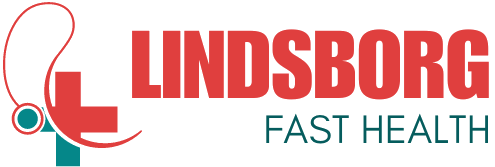Orthopedic rehabilitation encompasses a diverse array of treatment modalities tailored to each patient’s unique needs and circumstances. From conservative approaches like physical therapy and pain management to surgical interventions and pharmacological interventions, rehabilitation strategies are chosen based on the underlying pathology and individual preferences.
Orthopedic Rehabilitation
Orthopedic rehabilitation encompasses a range of therapeutic interventions aimed at improving musculoskeletal function and alleviating pain. Whether recovering from a traumatic injury, managing a chronic condition like arthritis, or undergoing elective surgery, patients benefit from the expertise of rehabilitation professionals who guide them through the recovery process.
Understanding Orthopedic Conditions
Before delving into rehabilitation strategies, it’s essential to grasp the nature of orthopedic conditions commonly encountered in clinical practice. From fractures resulting from trauma to degenerative joint diseases like arthritis, orthopedic issues vary widely in their etiology and presentation, posing unique challenges to rehabilitation specialists.
The Role of Orthopedic Rehabilitation
Orthopedic rehabilitation serves multiple purposes, including restoring physical function, reducing pain, preventing complications, and promoting independence. By addressing impairments and functional limitations, rehabilitation interventions aim to optimize patients’ overall well-being and facilitate their return to an active lifestyle.
Assessment in Orthopedic Rehabilitation
Effective rehabilitation begins with a comprehensive assessment to identify the patient’s specific needs, functional deficits, and treatment goals. Through a combination of clinical evaluation and diagnostic imaging, rehabilitation professionals gain valuable insights into the nature and severity of the orthopedic condition, informing personalized treatment plans.

VI. Rehabilitation Protocols for Different Orthopedic Conditions
Specific orthopedic conditions require specialized rehabilitation protocols to optimize outcomes and minimize complications. Whether recovering from a fractured bone, undergoing joint replacement surgery, or managing a soft tissue injury, patients benefit from targeted rehabilitation interventions designed to promote healing and restore function.
VII. Exercise Prescription and Rehabilitation Techniques
Exercise is a cornerstone of orthopedic rehabilitation, promoting strength, flexibility, and mobility while reducing pain and stiffness. Rehabilitation professionals prescribe tailored exercise programs encompassing a variety of techniques, from range of motion exercises and strengthening exercises to balance training and aquatic therapy, to address specific impairments and functional goals.
VIII. Assistive Devices and Orthotics
In some cases, assistive devices and orthotic interventions may be necessary to support the rehabilitation process and enhance mobility. Braces, splints, orthopedic footwear, and other assistive devices can help stabilize joints, offload pressure, and improve biomechanical alignment, facilitating optimal recovery and reducing the risk of re-injury.
IX. Psychological Aspects of Orthopedic Rehabilitation
Orthopedic injuries and conditions can have a significant impact on patients’ psychological well-being, leading to feelings of frustration, anxiety, and depression. As such, rehabilitation professionals address not only the physical aspects of recovery but also the psychological and emotional needs of patients, offering support, counseling, and coping strategies to promote resilience and adaptation.
X. Nutritional Considerations in Orthopedic Rehabilitation
Nutrition plays a critical role in orthopedic rehabilitation, influencing healing, tissue repair, and overall recovery. A balanced diet rich in essential nutrients, vitamins, and minerals supports musculoskeletal health and enhances the body’s ability to repair damaged tissues. Additionally, nutritional supplements may be prescribed to address specific deficiencies or promote tissue regeneration.
XI. Preventive Measures and Lifestyle Modifications
Beyond rehabilitation, preventive measures and lifestyle modifications are essential for maintaining musculoskeletal health and preventing future injuries. Education on proper body mechanics, ergonomics, and injury prevention strategies empowers patients to make informed choices and adopt healthy habits that support long-term well-being and functional independence.
XII. Special Considerations for Athletes
Athletes recovering from orthopedic injuries require specialized rehabilitation protocols tailored to their unique physiological demands and performance goals. Sports-specific training, gradual progression, and careful monitoring are essential components of the rehabilitation process, ensuring a safe return to sport while minimizing the risk of re-injury.
XIII. Pediatric Orthopedic Rehabilitation
Pediatric orthopedic rehabilitation presents unique challenges due to the ongoing growth and development of children’s musculoskeletal systems. Rehabilitation interventions must be carefully tailored to accommodate age-specific needs, promote optimal growth and development, and involve collaboration with families and caregivers to ensure continuity of care.
